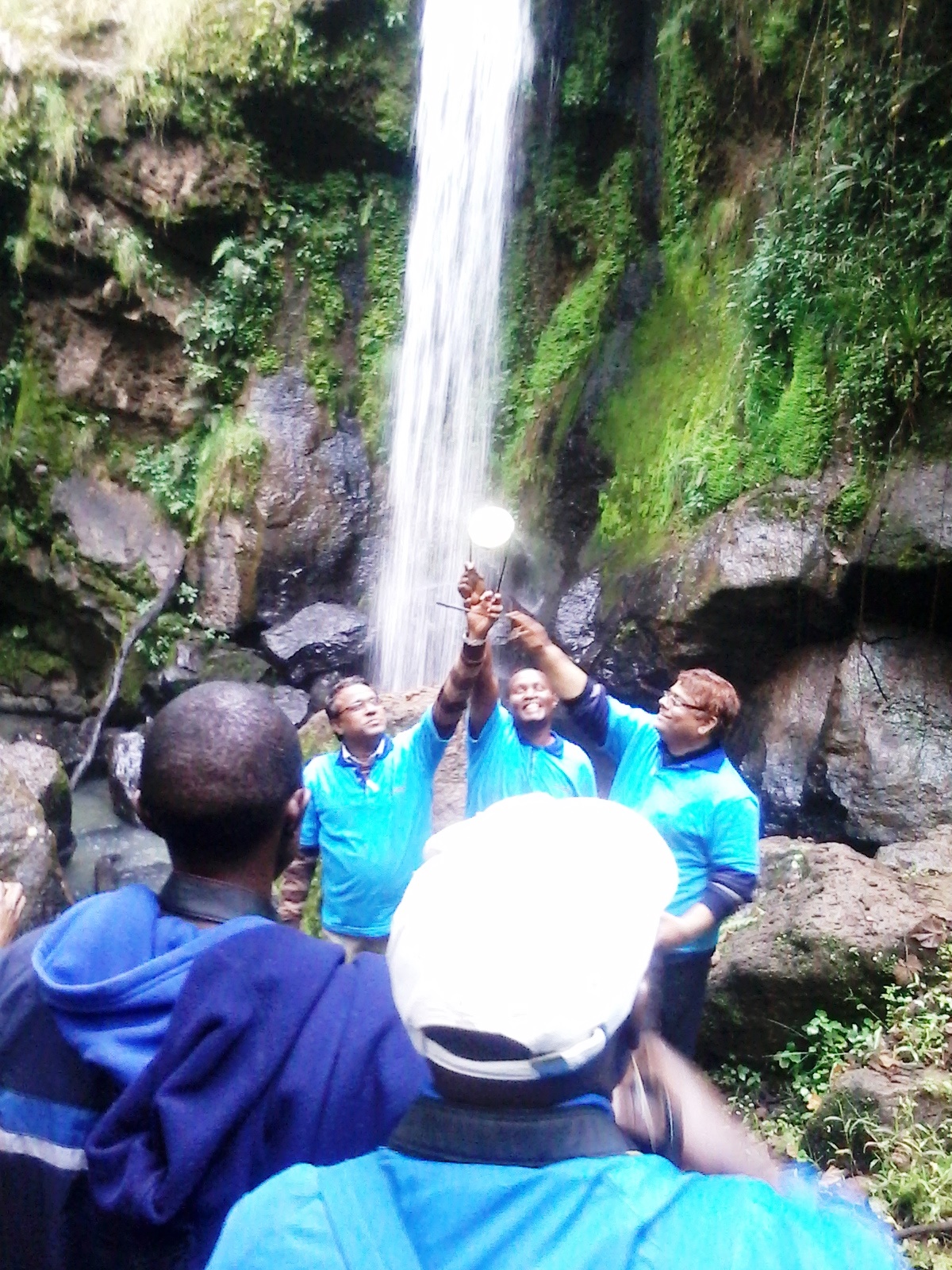GBM Blog
The Relationship between Environmental Stewardship and Sustainable Clean Energy Entrepreneurship
22nd, July 2014: The Green Belt Movement (GBM), Wangari Maathai Institute for Peace and Environmental Studies (WMI),wPOWER Project took a lead in Training of Trainers (TOTs) exposure training aimed at unlocking women potential in Natural Resource Management and Clean Energy Technology. The training of Trainer course on Sustainable Clean Energy Entrepreneurship which is being held in Kenya has representatives from 6 countries including Kenya, Uganda, Tanzania, Rwanda, Nigeria and India. This training was made possible through the wPOWER project with the financial support of the US State Department with parallel support from the MacArthur Foundation.
The site visit to the Aberdares Forest Ecosystem, Kereita Forest Block was to discuss and observe forests, water catchment management issues and other interventions within the ecosystem in Lari division, Kiambu District, Central Province, Kenya. The forest is threatened with charcoal burning, forest fires, illegal logging especially on cedar posts, community encroachment through illegal grazing, game damage by elephants and increase in population of the forest adjacent communities.
Speaking during the site visit, Wanjira Mathai, Wpower Director and Chair, the Green Belt Movement Board explained the importance of managing natural resources sustainably, conserving biodiversity and increasing energy access, which helps to combat climate change, improve livelihoods and advance community health.
“You are our professors oday, and we are grateful for every minute that you have let us be here with you today'She told the women at Kereita. She added that the late Prof. Wangari Maathai loved the area (Kereita) and that she now understands why . "it’s because I was tough so much about the area by Prof. Wangari Maathai and seeing the beauty and finally connecting, something just happened and until you feel it, you will know when it happens…..you need to feel it by touching the trees, the soil and meeting the women within the community and then the passion comes out.”
- Wanjira Mathai-Wpower Director
With the rising fuel costs, farmers in Kenya have come up with ways of generating power locally and cheaply. Biogas is increasing becoming a viable alternative to many farmers and especially those in high potential Central Highlands where dairying is common.
“Biogas is cheap to produce, clean to use and has helped my family utilize the waste from our dairy herd. It has also boosted our crop production through the production of manure in form of slurry”, said Prof Mary Njenga, ICRAF. as she showed us the farm land at Kamande Village, Kereita location.
This gas is very fast…If you have a big number of people to cook for, the work is faster, you don’t waste time splitting the firewood, and besides that the gas does not produce smoke that is dangerous to the health and the eyes.” “We can prepare all types of meals with biogas without having to substitute with fuel wood. It is also cleaner – with no smoke- leaving the cooking utensils shiny unlike when fire wood is used, leading to sooty cooking pans. The whole world ... is talking about climate change. We know in our small way we are helping to address the impact of climate change by saving the trees and using this clean energy source.”
- KENVO Project Officer
In the past, women had to trek the whole day fetching fuel wood deep inside the forest, exposing themselves to attacks by marauding jumbos and buffalos. The previously wasted time can now be used in productive activities such as farming or domestic chores.
This has also reduced the pressure on fuel wood harvesting from the Aberdare forest- that is just a kilometre away. This in turn has reduced the level of forest denudation through illegal fuel wood harvesting, logging and charcoal burning. Soil erosion is also expected to slow down as ground cover increases with reduced cutting of trees.
“Methane is a highly destructive greenhouse gas. Biogas systems utilize the gas in production of energy thereby avoiding its release into the atmosphere and contributing to global warming reduction”, observed the project officer KENVO.
She also intoned that households utilizing biogas systems should in future be considered for the carbon credits that many tree growers are enjoying in many parts of the world.
During the biogas production process, slurry- well fermented manure- floats out as a by-product. Women within the community are among those being trained as masons to install biogas digesters in Kereita area, providing households with cheap, clean energy and helping to slow climate change by replacing wood, gas, or kerosene.
The workshop has brought together different partners in the clean energy and environmental sectors from the Great Lakes Region who have come together to identify priority areas and action plans for each country. Africa women are on the frontline of environmental challenges and experience environmental impacts in very real and serious ways. Unlocking women’s potential as “green agents of change” is necessary to realize the full potential of investments in conservation in the region and ensure the long term sustainability of conservation outcomes.
Drive to Gatamaiyu waterfall. Walk through the natural forest to Gatamaiyu waterfall
The Green Belt Movement and The New Course through the support of MacArthur Foundation have partnered to develop a program that will unlock women’s potential in natural resource management and in climate change mitigation and adaptation strategies across three East African priority watersheds. We thus hope that the Training of Trainers (TOTs) participants from other country will take up the same initiative as a way forward.
The training will be build a foundation with a permanent program designed to strengthen the capacity of rural women to manage natural resources within the Wangari Maathai Institute for Peace and Environmental Studies (WMI).
Photo Gallery:

